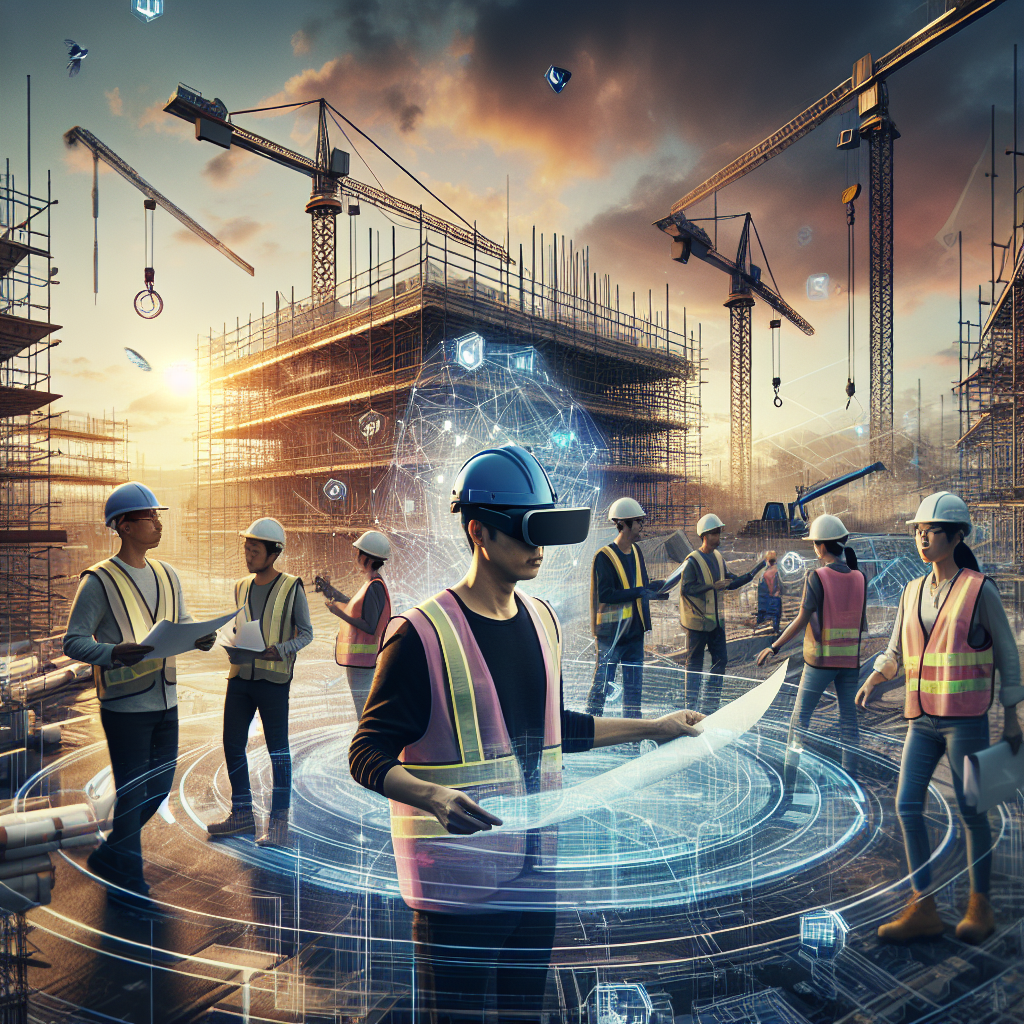Revolutionizing Construction: How Augmented Reality is Reshaping the Industry
In recent years, the construction industry has seen many technological advancements that have transformed the way projects are planned and executed. One of the most promising and impactful innovations is the integration of augmented reality (AR) into construction processes. AR technology has the potential to completely reshape the industry by providing real-time, interactive visualizations that can help improve efficiency, accuracy, and collaboration on construction sites.
What is Augmented Reality?
Augmented reality is a technology that overlays digital information onto the physical environment. By using AR, users can interact with computer-generated objects and data in real time, enhancing their perception of the world around them. In the construction industry, AR can be used to create detailed 3D models of buildings and infrastructure projects, enabling stakeholders to visualize and interact with designs before they are built.
How is Augmented Reality Revolutionizing Construction?
Augmented reality is revolutionizing the construction industry in a number of ways:
1. Enhanced Visualization: AR technology allows stakeholders to see 3D models of projects overlaid on the physical environment. This enables designers, architects, and engineers to better visualize their designs and make informed decisions about construction processes.
2. Improved Collaboration: AR tools facilitate better collaboration among project teams by providing a shared, interactive platform for reviewing and discussing designs. Stakeholders can easily share feedback and make revisions in real time, leading to more efficient communication and decision-making.
3. Increased Efficiency: By visualizing projects in AR, construction teams can identify potential issues and conflicts early in the planning process, reducing the likelihood of costly errors and delays. AR also enables workers to access critical information on-site, such as building plans and safety guidelines, without having to consult paper documents or computers.
4. Enhanced Safety: AR technology can improve safety on construction sites by providing workers with real-time information on potential hazards and safety procedures. For example, workers can use AR headsets to see safety warnings and alerts overlaid on their field of vision, helping them stay aware of their surroundings and avoid accidents.
5. Cost Savings: By streamlining communication, improving collaboration, and minimizing errors, AR technology can help construction projects stay on schedule and within budget. This can lead to significant cost savings for clients and contractors alike.
Frequently Asked Questions about Augmented Reality in Construction:
Q: How is augmented reality different from virtual reality?
A: While both augmented reality and virtual reality involve computer-generated simulations, the main difference is how they are experienced. Virtual reality immerses users in a completely digital environment, while augmented reality overlays digital information onto the physical world.
Q: What types of AR devices are available for the construction industry?
A: There are several AR devices that can be used in construction, including smartphones and tablets with AR-enabled apps, AR glasses and headsets, and wearable AR devices like smart helmets.
Q: How can AR technology benefit construction project stakeholders?
A: AR technology can benefit construction project stakeholders by providing enhanced visualization of projects, improving collaboration, increasing efficiency, enhancing safety, and reducing costs.
Q: What are some examples of successful AR applications in construction?
A: Some examples of successful AR applications in construction include using AR to visualize building designs, simulate construction processes, train workers on safety procedures, and track progress on construction sites.
Q: What are the challenges of implementing AR in the construction industry?
A: Some challenges of implementing AR in the construction industry include the cost of AR devices and software, the need for specialized training for workers, and potential privacy and security concerns related to data collection and sharing.
In conclusion, augmented reality has the potential to revolutionize the construction industry by providing stakeholders with enhanced visualization, improved collaboration, increased efficiency, enhanced safety, and cost savings. As AR technology continues to evolve and become more accessible, we can expect to see even greater innovations and benefits in the construction sector. By embracing AR and integrating it into their workflows, construction companies can stay ahead of the curve and deliver higher-quality projects in a more efficient and sustainable manner.
